Welcome to the future! We’re living in a wild age, am I right? Virtual reality (VR) has become ubiquitous in our everyday lives and is quickly becoming a staple in the real estate industry. It’s permeating everything from shopping in a virtual world to allowing homebuyers to explore homes from thousands of miles away to helping developers visualize a future project. In this article, I’ll explain virtual reality real estate, how it can change your business, and why you need to get on board with this new technology.
What Is Virtual Reality Real Estate?
Let’s start by answering this basic question. Real estate virtual reality makes property exploration as easy (and fun) as a video game. Strap on a VR headset, and suddenly, you’re not just window-shopping—you’re strolling through homes, checking out the views, and feeling like you’ve teleported to the location—all without leaving your comfy chair. VR in real estate brings properties to life in three-dimensional brilliance, offering buyers, sellers, and agents an immersive experience that redefines how we interact with properties, all thanks to those cool VR goggles.
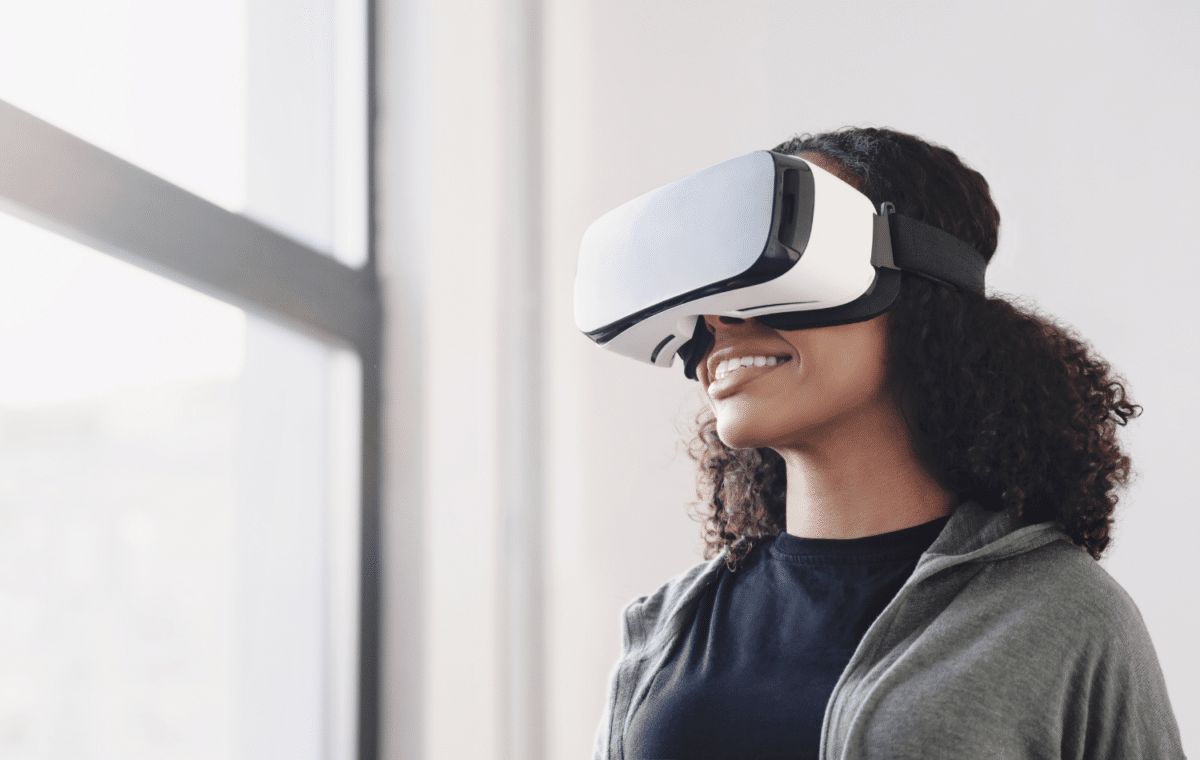
Real estate VR is a game changer for agents who want to explore the international market. With this technology at the fingertips of buyers and sellers around the globe, it’s easier now to sell real estate from anywhere in the world. Now, agents can show off their listings in an immersive way to just about anyone, anywhere on the planet. Ready to buy a beautiful beach house in Miami but can’t make the trip? No worries! Strap on a VR headset and take a virtual tour to feel like you’re already there.
VR, AR & MR Technologies in Real Estate
Let me clarify the difference between the main virtual reality elements: virtual, augmented, and mixed. Many people get confused about these, so let’s break them down.
Virtual Reality (VR)
VR is like a teleportation device for house hunters. It immerses you in a virtual world, making you feel like you’ve stepped inside a property, even if you’re miles away. It’s all about creating a fully digital, interactive experience without connection to the real world around you. If you have a teenager who plays video games with a VR headset, that’s virtual reality.
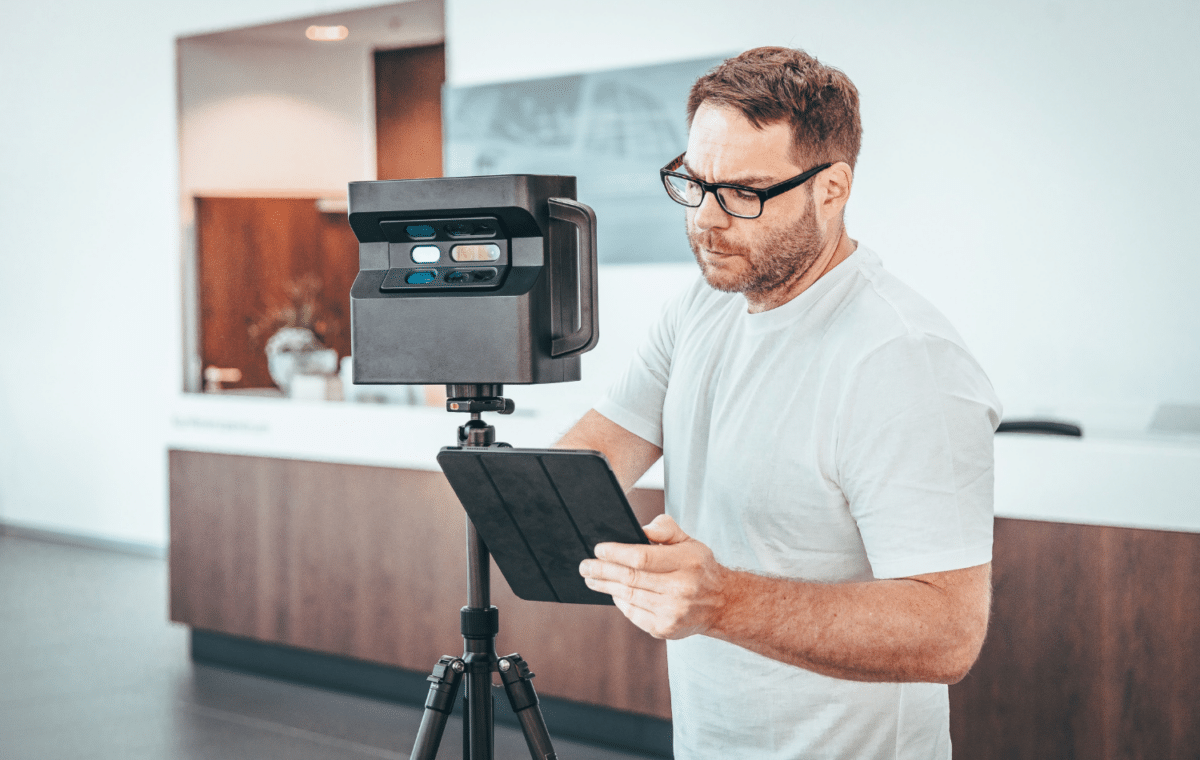
Augmented Reality (AR)
AR, on the other hand, doesn’t whisk you away—it enhances your real-world surroundings. It’s like having a real estate info overlay on your smartphone camera. AR adds digital information or objects to what you see through your device, like providing property details while you look at a building or adding furniture to an empty room. Think Pokémon GO, where the characters exist in the real world through your app.
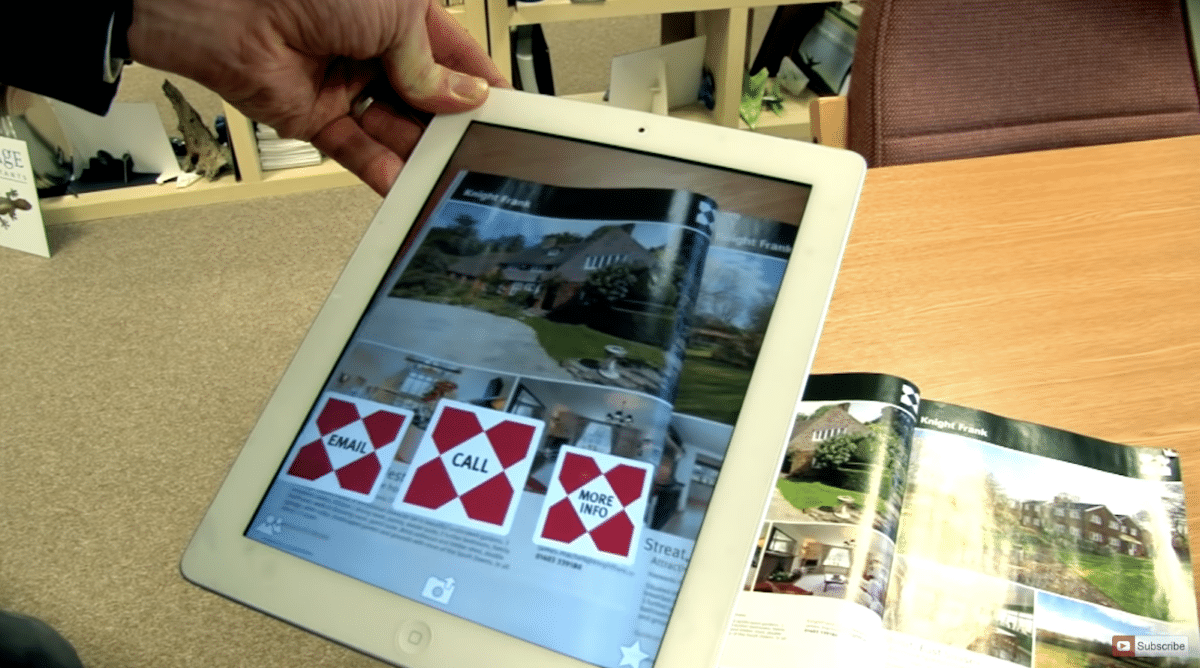
Mixed Reality (MR)
MR is the cool hybrid of VR and AR. It merges digital elements with your actual environment, letting you interact with both. Think of it as bringing digital furniture into your real living room to see how it fits or trying out different flooring colors and styles through an app before deciding which works best. MR combines the best of both worlds, offering a blend of virtual and real-life experiences. Emerging technologies, like Domotics, are creating entire platforms that cater to this type of experience for real estate.
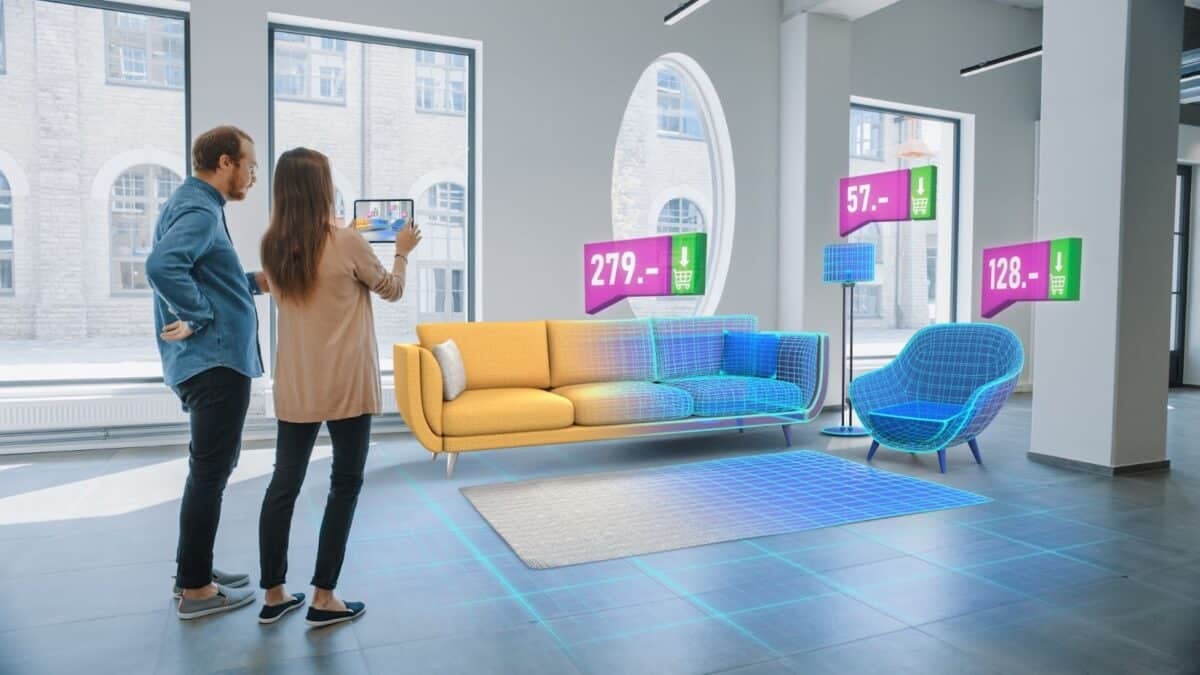
How Many Real Estate Professionals Are Using VR?
It may surprise you that virtual reality realty is already a thing. The National Association of Realtors (NAR) recently completed its technology survey and discovered that 67% of agents are spending their own money on virtual reality and artificial intelligence (AI) tools for their businesses. Brokers should pay attention and find ways to add this technology to their recruitment packages. The truth is VR is taking off at a rapid pace, with 65.9 million current VR users in the U.S., which is 15% of the country’s population, and it’s showing no signs of slowing.
However, adoption seems to be a bit slower in the real estate marketplace. Younger people have jumped in feet first into this technology, but only 14% of real estate agents believe the metaverse, VR, and AR are currently impacting real estate and only 56% think it will have an impact in the next five years. That’s alarming! Virtual reality real estate is here to stay and savvy agents will learn to implement some of these cool tools in their businesses to increase their bottom line.
4 Ways Virtual Reality Is Used in Real Estate
Let’s talk about all the ways agents can start using virtual reality in their real estate businesses right now.
Virtual Showings & Open Houses
The most apparent areas where virtual reality can benefit are real estate showings and open houses. While I highly recommend holding homes open in person, why stop there? With the current VR tech, agents can have showings 24/7, anywhere in the world. During the pandemic, virtual showings and open houses became the only way to show homes. The best thing about living under those restrictions is it opened up a world of possibilities in virtual tours and the ability to market your listings beyond your typical reach. It became possible to show your listings to people in other cities, states, and countries.
Check out this video demonstrating how VR from Matterport can enhance one of your listings.
Promotional video of The Altman Brothers describing how they use Matterport (Source: Matterport)
Today, holding open houses is still a great way to generate leads. However, some homes require screening to protect either sellers or their high-end properties, and there may be better courses than in-person open houses. Virtual reality enables serious buyers to efficiently focus their options while preventing “looky-loos” from pestering homeowners with unnecessary private tours.
Additionally, reaching your potential buyers may be complicated with in-person showings. I specialized in selling to military active duty members who must move around the globe every few years. So, sending listings to Japan or Germany was pretty commonplace. Giving them the ability to walk through a home on the other side of the world is priceless. My clients loved that they didn’t have to try to make a trip back to the United States just to tour homes for their upcoming move.
VR real estate tours and home showings are ideal for:
- Military families
- Luxury buyers
- Job relocation services
- Second-home or vacation homebuyers
VR Home Staging
I absolutely love the possibilities virtual reality home staging offers. You can paint the walls of your listing, add furniture to a bare home, and even show potential buyers what a backyard could look like with a virtual pool added. Some apps are providing these services already, and they’re changing how agents sell their listings.
I remember paying someone on Fiverr.com to change the paint color on the walls in one of my listings. They charged around $25 per photo. But there are new apps, like ApplyDesign, that will do this task for you, as well as stage rooms with high-quality furniture, updated fixtures, plants, art, rugs, and more almost immediately at a fraction of the cost.
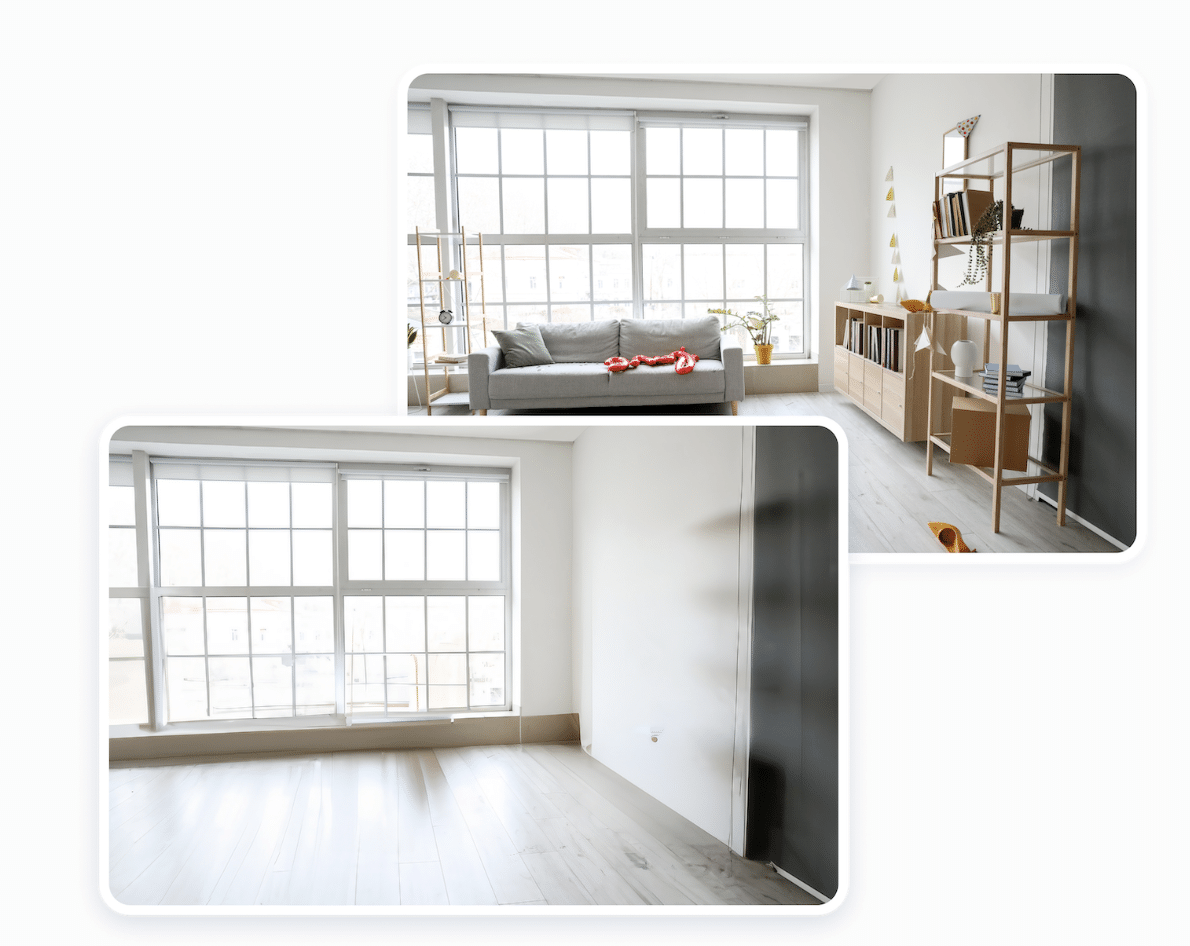
First impressions can make or break a buying decision. If you’re marketing a listing, you definitely want to tap into the emotional journey of your potential buyer. You know that a staged home sells faster and easier, but hauling (and storing) staging furniture can be prohibitive. Use the power of virtual staging to create the same feel without all the moving. And for the money, you can stage one room with multiple uses, whereas in physical staging, you can only stage it one way. So, if you have an extra bedroom, you can virtually stage it as a nursery, a workout room, and even a home office.
Virtual Neighborhood Tours
During the pandemic, I purchased a 360-camera to do neighborhood tours. It was a fun way to stay connected with my audience when everyone was isolated. Today, neighborhood tours serve an even deeper purpose—giving potential residents a feel for their future community.
Virtual neighborhood tours can help potential homebuyers feel like they’re riding (or walking) through the neighborhood before deciding to make it their home. Any time you can address a buyer’s objections, including whether the neighborhood is a good lifestyle fit, you’re working smarter instead of harder.
The 15 Best Apps for Real Estate Agents (2024)
VR in Commercial Real Estate
In case you were wondering, yes, VR is also beneficial in commercial real estate. It’s being utilized extensively for rehab and renovation projects, new construction and development, and more. With VR, investors and developers can imagine their projects in clear, three-dimensional glory.
With VR technology, developers have the power to create a 3D model of their projects, allowing them to make virtual modifications, swap elements, and view the changes in real time. Imagine one of those shows on HGTV where designers present homeowners with a vision of the completed project before any physical work begins. Minimizing surprises at the conclusion of a residential project leads to higher client satisfaction.
Imagine collaborating with a real estate investor on a home sale. Utilizing virtual reality technology, you can showcase the property’s potential by overlaying a vision of the renovated space onto the current one. Closing a deal becomes significantly easier when clients can visually grasp the property’s value without relying on their imagination. Instead of asking them to envision the possibilities, you can directly present them with a tangible future for the property.
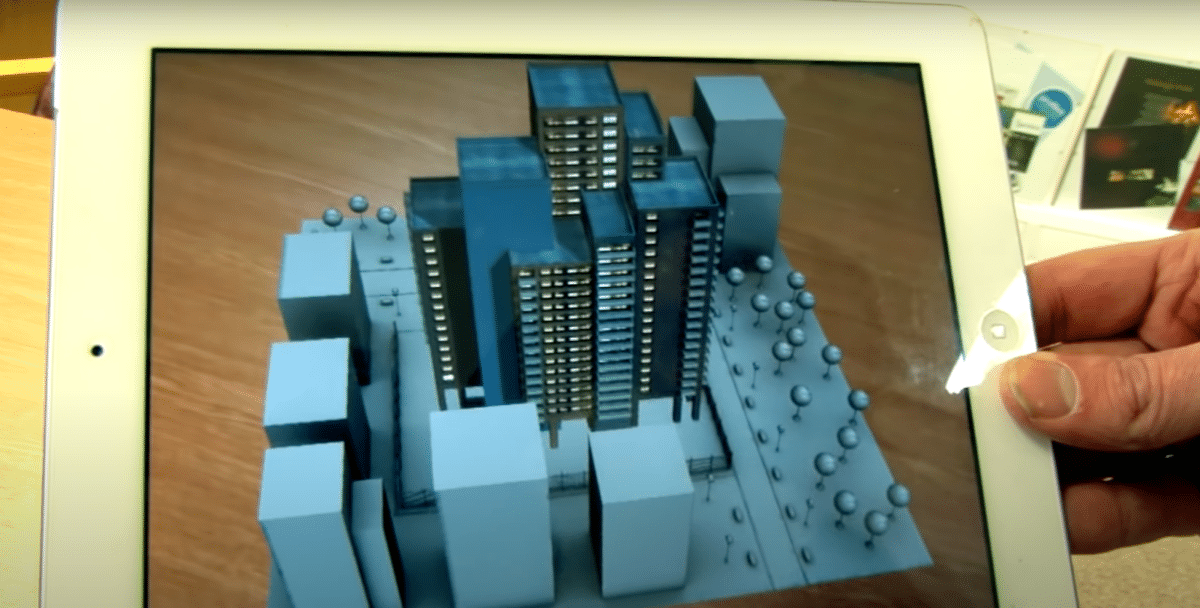
Overcoming VR Skepticism in Real Estate
Naturally, many people, including real estate agents, are skeptical about using VR for real estate. Some fear the technology, others feel it’s prohibitive due to costs, and others are simply unfamiliar with the potential of this type of tech. But agents who embrace the tech and offer more diverse and immersive experiences to their clients, both buyers and sellers, will pull ahead of their competitors.
How VR Can Enhance Your Real Estate Business
- Enhance your marketing efforts with 3D walk-throughs
- Be the agent everyone wants when you give VR headsets to your buyers
- Improve your listing engagement with virtual walk-throughs
- Virtual showings of listings while you’re on vacation
- Virtually paint walls, add landscaping, or even add additional elements to your listings to attract buyers
- Show a finished renovation project before it’s started
- Enable buyers to see a home before it’s complete
- Change out elements of a home renovation project or new construction
- Allow showings 24/7 of any of your listings
- Virtually stage a home and allow for multiple versions (show a bedroom as both a home office and a nursery to attract multiple buyers)
And the technology is evolving quickly. With the addition of mixed reality that allows users to interact with augmented reality elements layered over the real world in real time, the possibilities are only beginning to surface. Imagine having your clients upload photos of their furniture to stage it virtually in a home to make sure it fits before they put in an offer. That’s the kind of innovation we’re moving toward.
I’m excited to see the evolution of proptech (property technology) already available and becoming more and more affordable. As this space evolves, staying informed and adaptable is key to navigating its potential in the real estate marketplace. As R. David Edelman, founder and director of Project on Technology, the Economy, and National Security, said at Inman Connect New York, “AI won’t replace you, but those who know how to use it will.” And he’s probably not wrong about that.
Why VR Isn’t Just a Trend, It’s Your Real Estate Ally
Listen, I hear your skepticism from here. But trust me when I say that this technology is here to stay. And one day, it will become as commonplace as that computer in your hand. Technology evolves faster than our brains are ready to accept, but that has never slowed its advancement. I just spent a few days at Inman Connect New York and met so many people already looking for more ways to harness the technology that exists to make our lives as real estate agents easier.
Real estate virtual assistants used to be actual people who would handle tasks for you to free up some of your time. Soon, those tasks will be handled by AI and mostly automated. In fact, many proptech companies have already integrated AI into their systems to do much of that work. It’s pretty amazing what these companies are creating, and it will change the way agents work from this point forward in a good way. Virtual reality in real estate is more than a fleeting trend—it’s a powerful tool reshaping how we buy, sell, and experience properties.
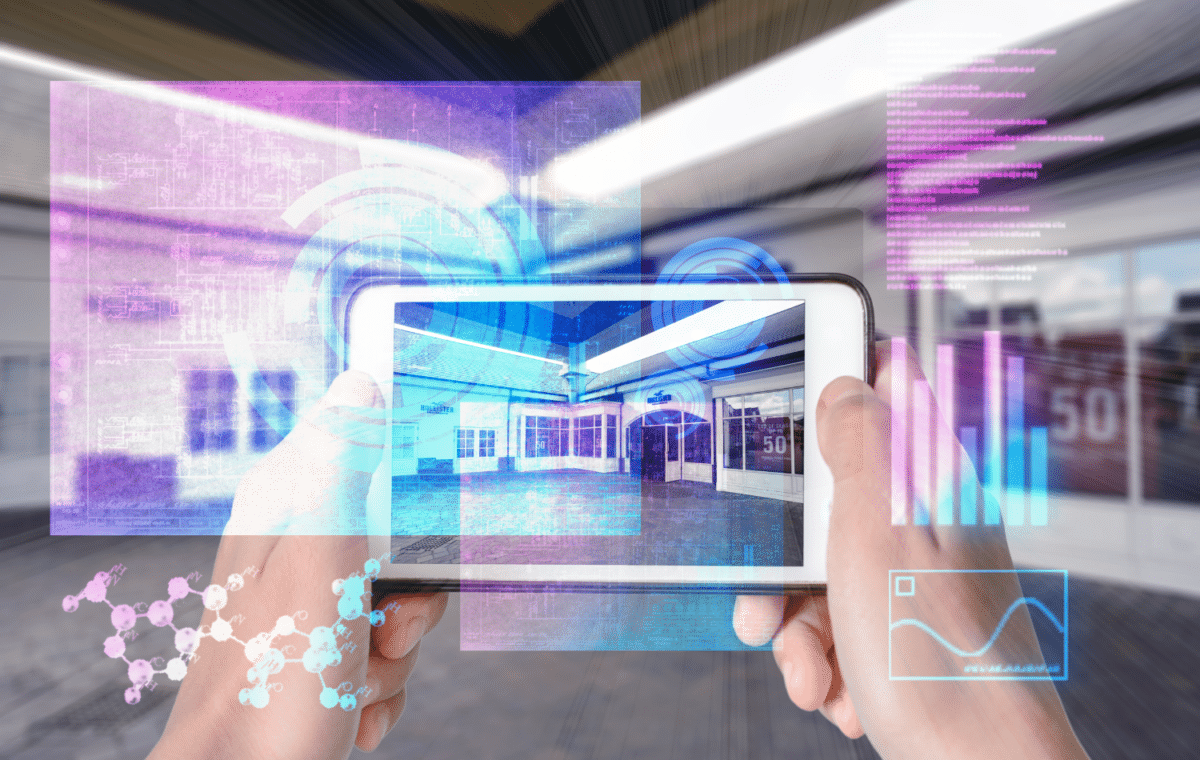
Think of how much time you’ll get back to spend with your family. Does someone want to view a home while you’re on vacation? No problem! Send them a pair of VR goggles (less than $30 on Amazon) and let them tour it virtually. Your listing has wild-colored paint on the walls, and you’re not getting any showings? Have your virtual staging app paint the walls to get buyers to see the possibilities. Are you trying to show an investor how glorious your listing could be? Use augmented reality to show how renovations might look in the right hands. Closing the deal just got a whole lot easier.
Harnessing the innovative powers of virtual and augmented reality gives real estate experts, investors, and clients enhanced abilities to conceptualize, evaluate, and explore properties before purchasing. It’s a win-win-win.
FAQs
Is virtual real estate worth it?
As of right now, the jury’s still out on whether or not virtual real estate will be worth anything or whether it will appreciate over time the way real estate does in the real world. But I wouldn’t count it out just yet. Diversification of power has the potential to level the playing field for a lot of people. And the more people invest in it, the more the potential increases. Only time will tell if it catches on enough to make it viable.
What is metaverse real estate?
It’s exactly the same as in the real world, except that it only exists in the virtual realm. When you buy a property in the metaverse, you can set up shop, sell your NFTs, lease it out, and turn around and sell it to someone else. Some people have invested in virtual vacation homes, others in business fronts. It’s reminiscent of the old Monopoly game but with better options and real currency.
Are there any specific VR headsets or technologies recommended for real estate professionals?
For virtual tours in homes, you can invest in VR headsets for your clients for less than $30 a pair. There are more expensive ones that are higher quality, but invest in the less expensive ones to give away. If you want to keep a fancy pair in your office and invite clients to view properties, that’s also an option.
Once you’ve invested in the VR headsets, you can send listings with virtual tours to your clients to view through the goggles. If a listing includes a 3D home tour, buyers can do a virtual walk-through with or without the goggles. The difference is with the VR goggles, it’s an entirely immersive experience.
To use the VR real estate technology in your listing, you will need 3D photos. You can invest in a 3D camera and learn to take your photos. You can purchase an Insta360 camera for around $450. Or you can pay a professional to do it for you. I hired my real estate photographer, J Beard Graphics, to shoot 3D photos to create virtual reality tours. He charges around $11 per square foot to shoot 3D images.
Many agents are familiar with Matterport, which is known for creating dollhouse images where shoppers can drop in anywhere in a home to see 3D images. These are great, especially for higher-end or luxury listings. Matterport offers a range of services to choose from to make entry easier.
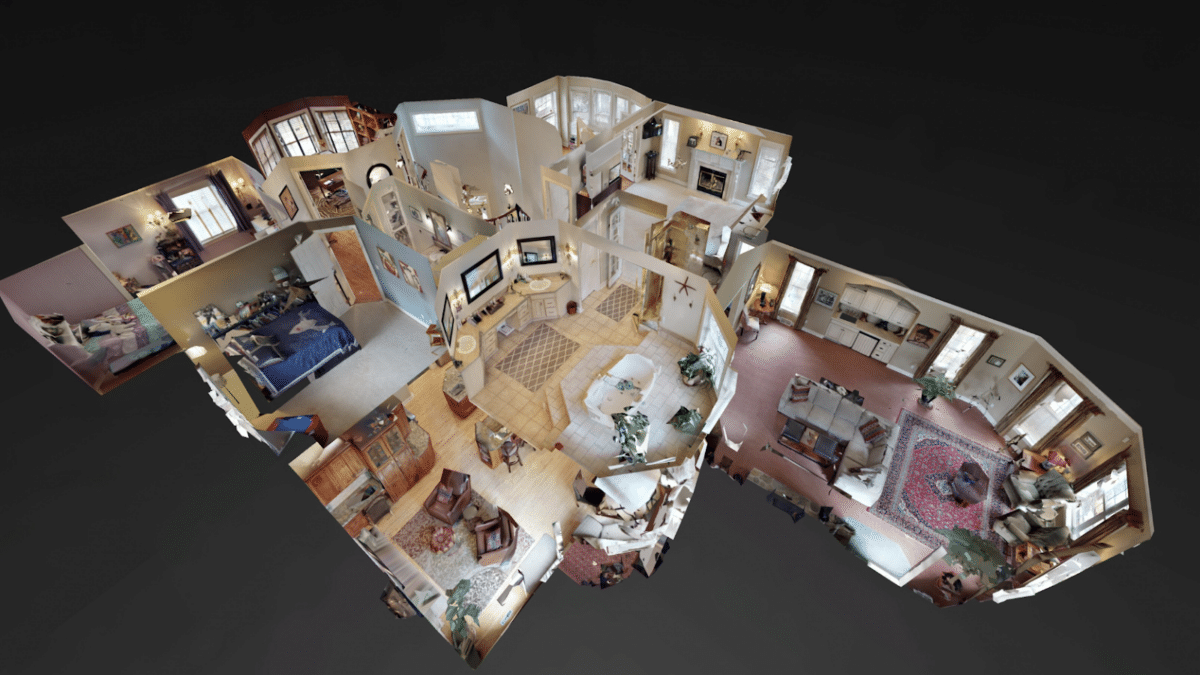
What are the advantages of using virtual reality in the homebuying & selling process?
Virtual reality (VR) technology has revolutionized the homebuying and selling process, offering numerous advantages that streamline and enhance the experience for buyers, sellers, and real estate professionals alike. Remote access is one of the most significant advantages of using virtual reality in real estate. Potential buyers can tour homes from anywhere in the world.
VR real estate also provides an enhanced visual experience that goes beyond your typical photo or even video tours. Your buyers can more easily connect emotionally to a property with an immersive experience. Buyers can get a realistic feel of the property, including spatial awareness and layout, which helps in making informed decisions.
Are there any potential drawbacks or challenges associated with adopting VR in real estate?
One of the challenges of adopting VR technology is privacy and security concerns. Protecting clients’ data may become difficult without the proper cybersecurity measures. With the initial cost of equipment, technical issues, or even internet connectivity, VR could be prohibitive for many people.
But beyond the costs and the security concerns, there is the potential for a lack of human connection that we should also acknowledge. If buyers, sellers, and agents become too reliant on AI, VR, and other technology, the experience could depersonalize, making it difficult for people to make that final decision. There is definitely a nuance between in-person and virtual experiences that could be lost.
Lastly, there could be some regulatory issues. Right now, we’re living in the Wild West of technological advancement. But, along with AI, VR could see some regulation in the future. Cybersecurity issues may call for some reining in of the tech, but there could also be some bad actors taking advantage of the virtual reality capabilities to mislead customers. There may also be some issues with intellectual property, copyright infringement, and liability that could arise and put some agents in the legal hot seat.
Your Take
Don’t let your apprehension about technology keep you from embracing virtual real estate. There are tons of advantages to using these tools to help you do your job more efficiently. Free up your time by eliminating obstacles that keep your clients from making a decision easier and faster.
Are you currently using some cool virtual tools to sell more real estate? What are your favorite VR real estate tools? Did I miss something you want me to discuss next time? Drop me a line in the comments!






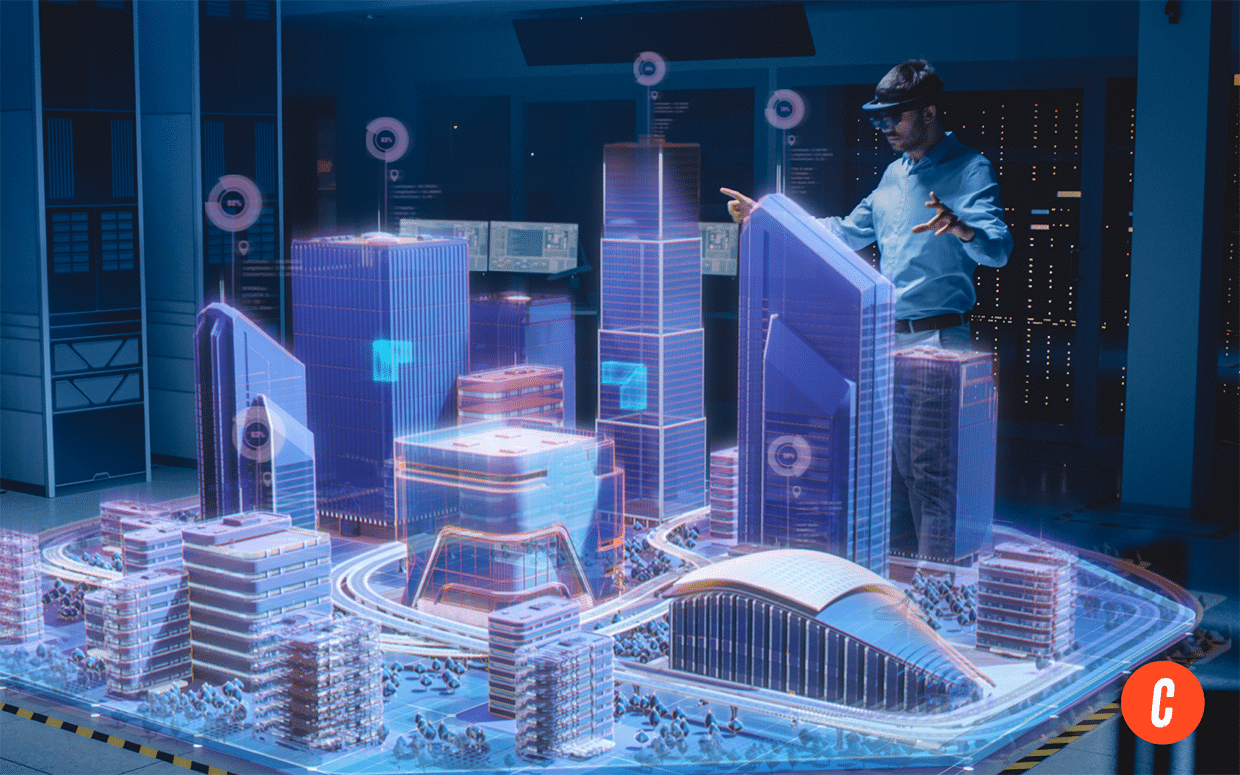


Add comment